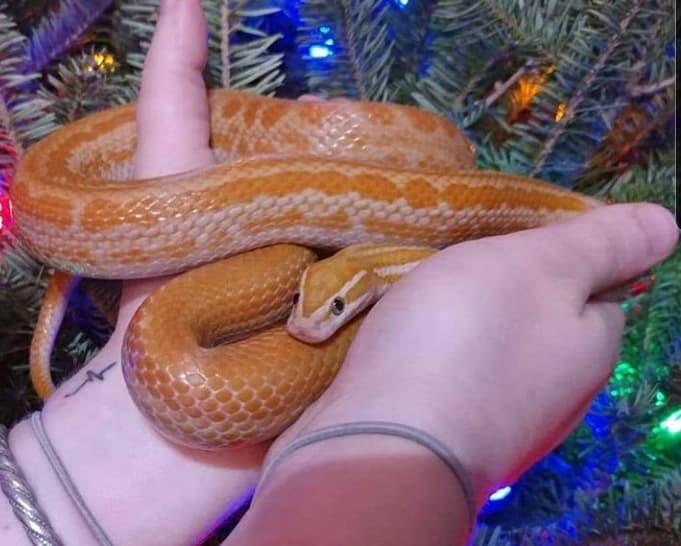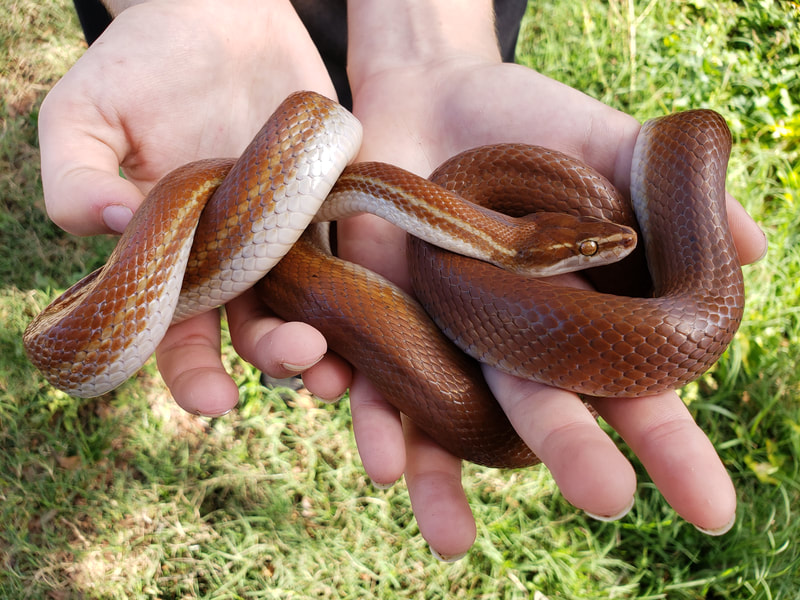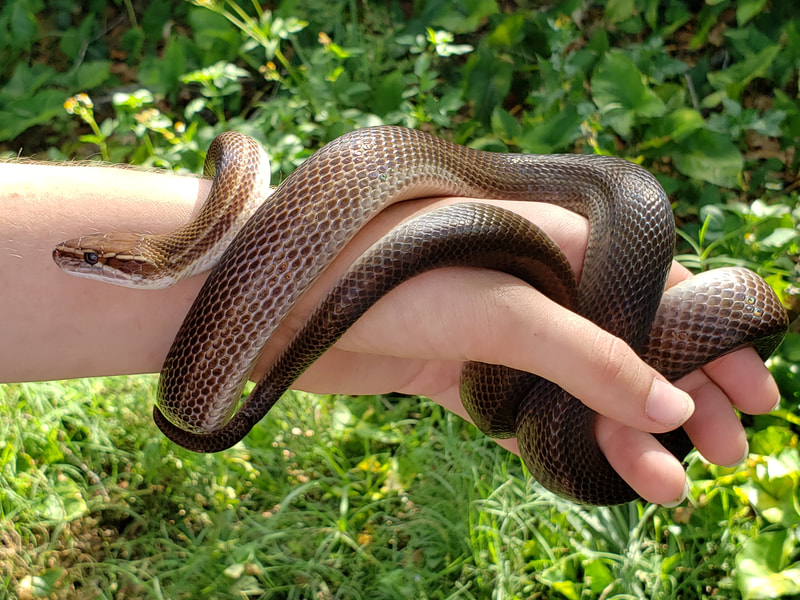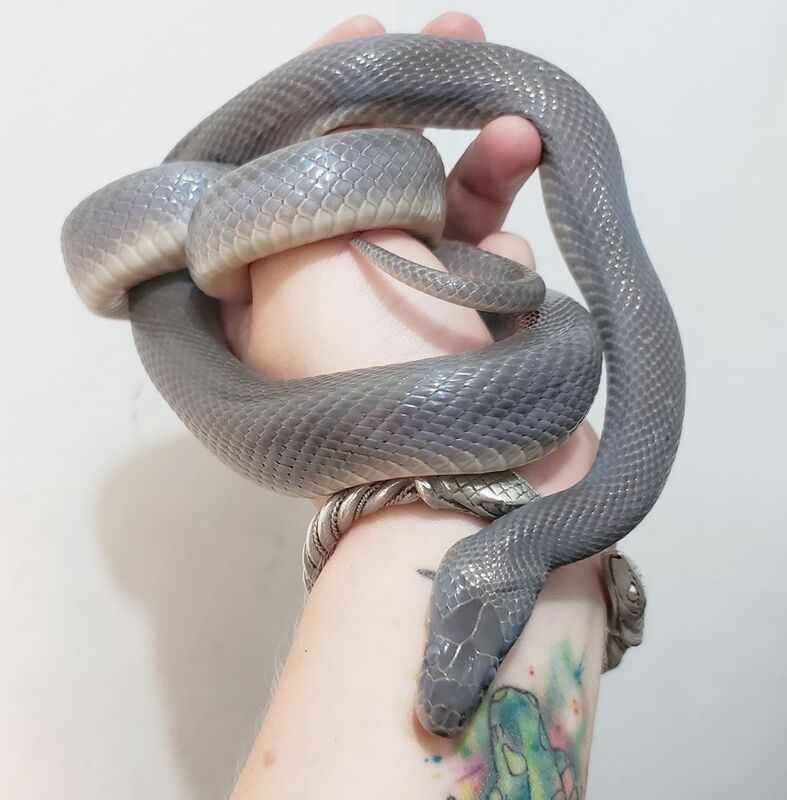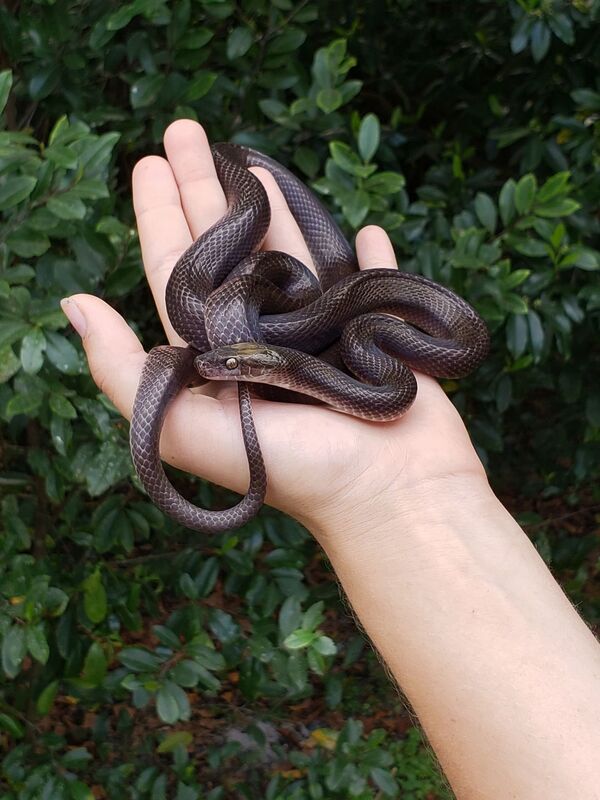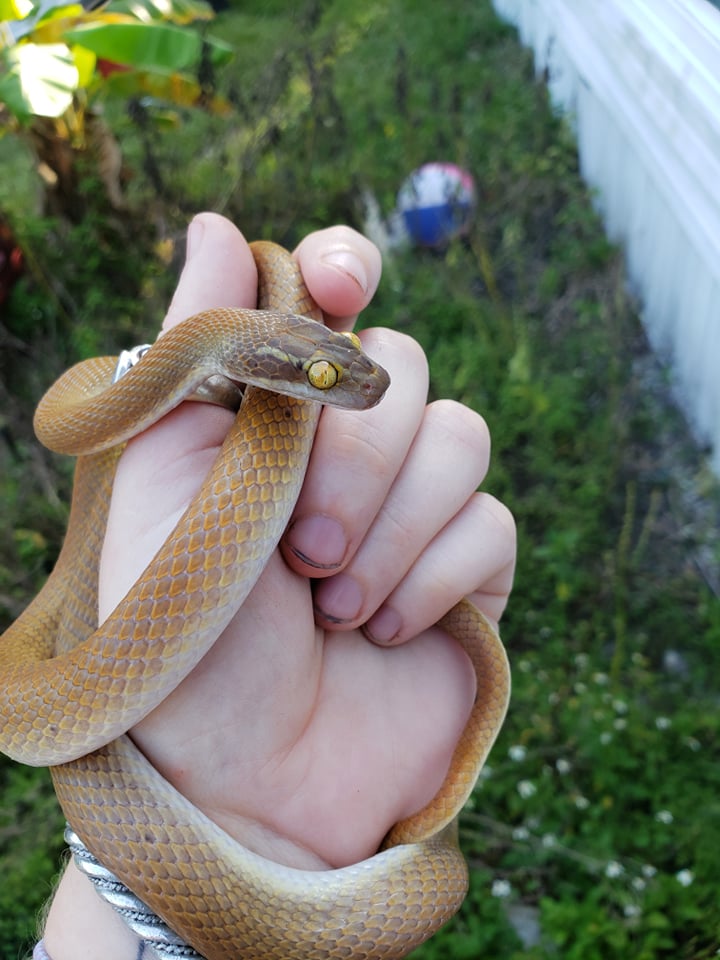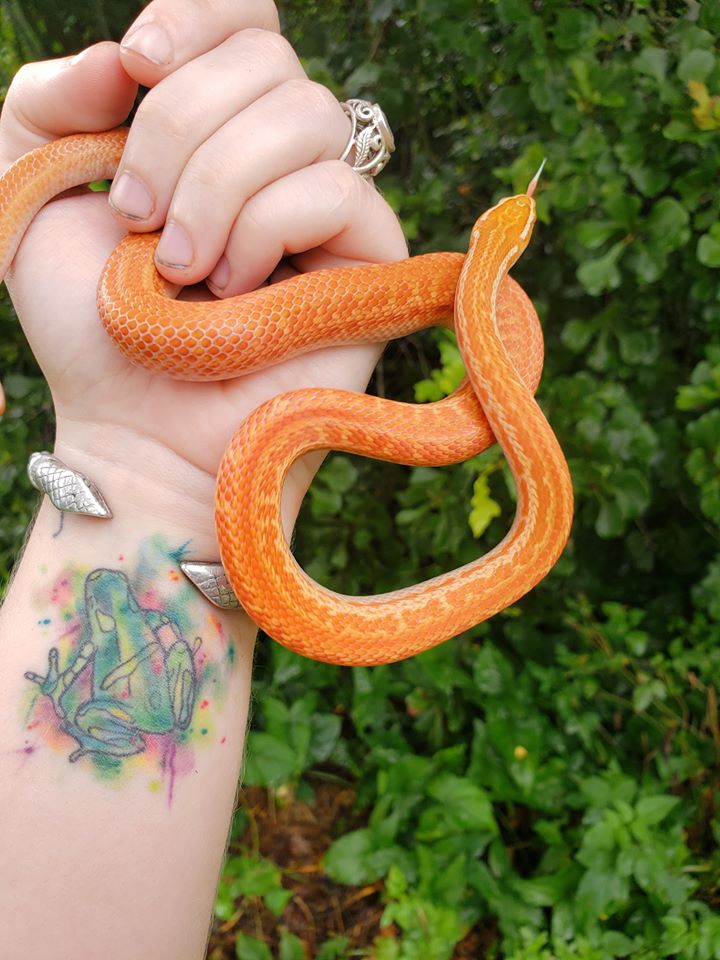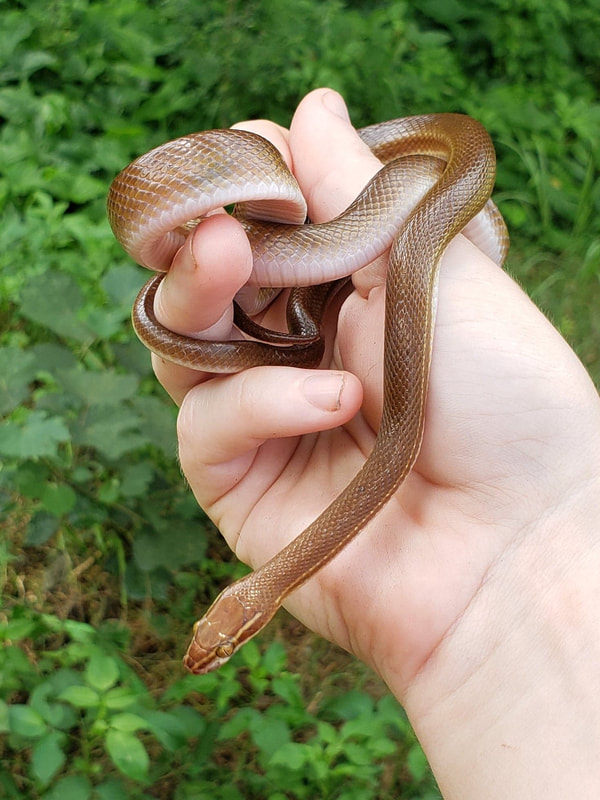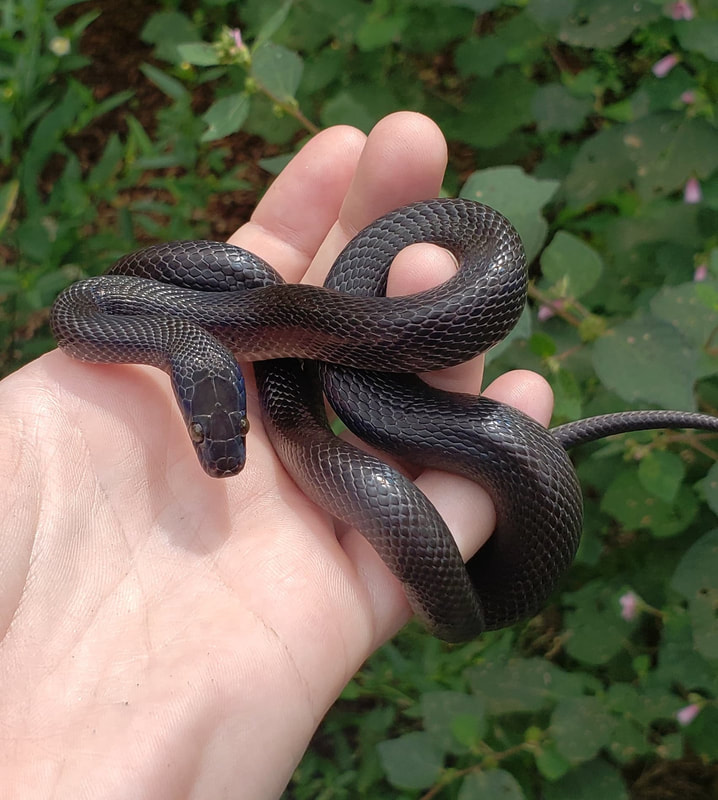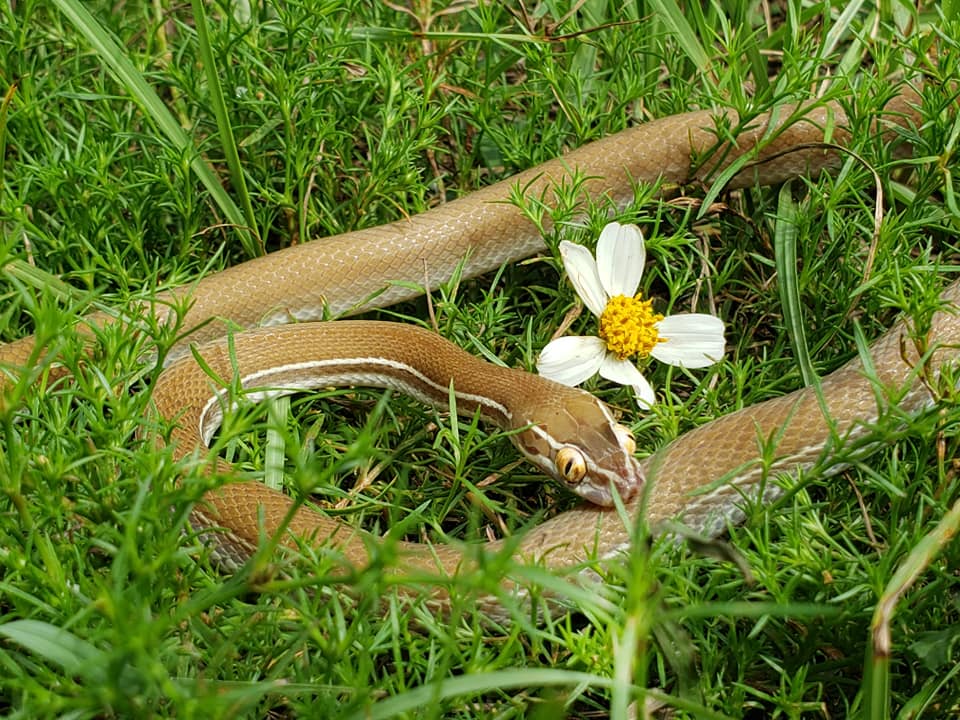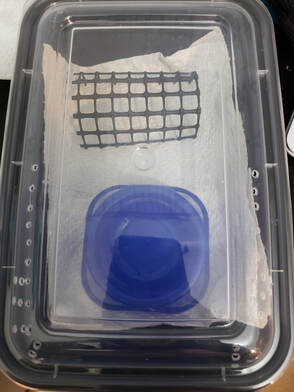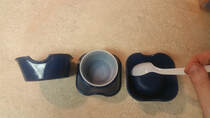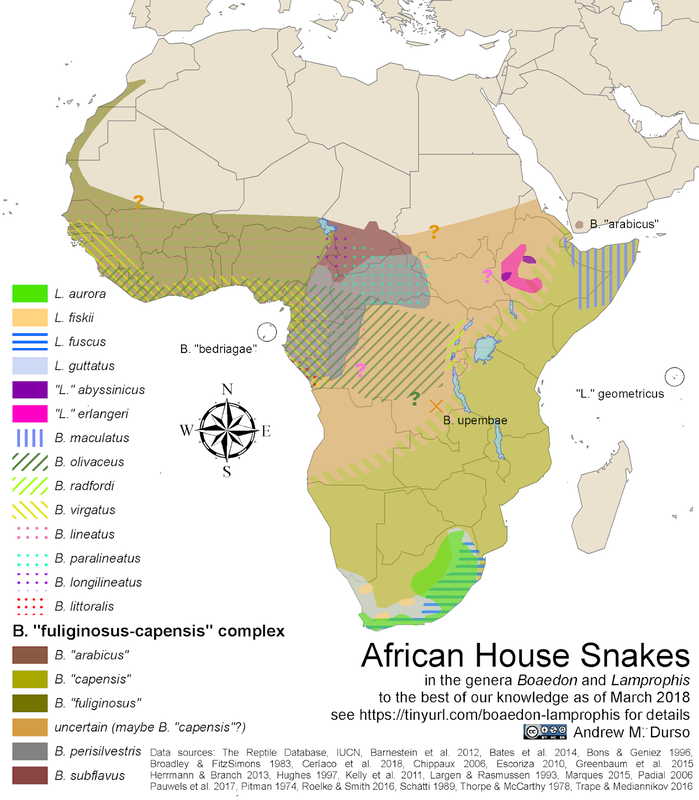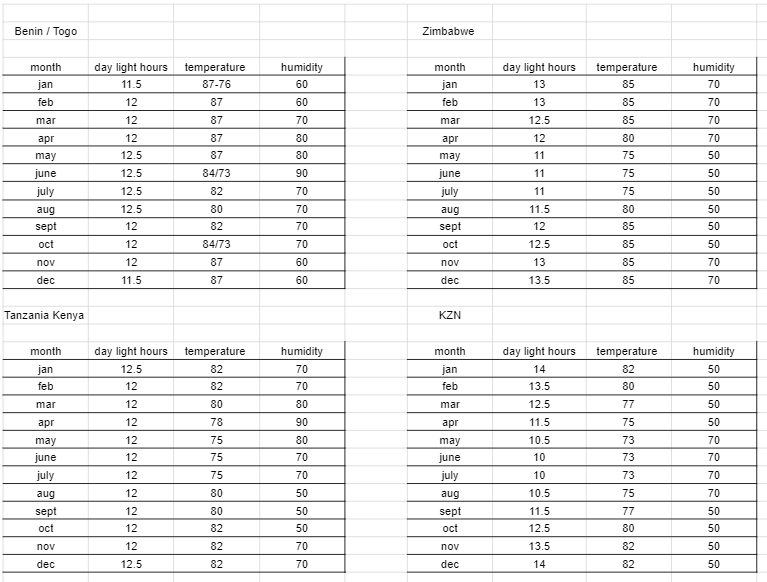African House Snake Basics & FAQ
The first thing I should mention here is there are many ways that people have successfully kept and bred house snakes. This is just one of those ways. Others will keep their house snakes in different ways, and that doesn't make them wrong. Others may disagree with these methods and that doesn't mean there is something wrong with them. There is no exact science to herpetoculture. I encourage you to read as much as you can and come to your own conclusions. You may need to find what works for your snakes in your circumstances.
Other resources for gathering house snake information include publications, search engine results, and facebook groups such as "Lamprophid Lovers", "African House Snakes", " House Snake Keepers", and "Lamprophis & Boaedon".
Other resources for gathering house snake information include publications, search engine results, and facebook groups such as "Lamprophid Lovers", "African House Snakes", " House Snake Keepers", and "Lamprophis & Boaedon".
FAQ
Size & Feeding
|
|
Probably the most common question I get about house snakes is, how big do they get?
Cape Females get around 32 inches, males considerably smaller around 18 to 24" For those familiar with other colubrids bigger than a garter snake, less length than a corn snake, but stockier. Below are some adult females to reference. |
Thats about as big as youre looking at.
Capes and are the largest and heaviest. A female can easily take down a full grown retired breeder mouse or rat fuzzy. Males would be fed roughly hopper/weaned mice.
Togo stripes are a close second to capes in size when full grown.
Greens, blacks, mentalis are a bit smaller. Adult mice is as big as they'd need to eat for females and males eating hoppers.
Boaedon Lineatus are considered "dwarves". They are the smallest, an adult female would eat weaned mice and fuzzy mice for the males.
House snakes are heavily sexually dimorphic with the males being considerably smaller than females. Heres a few males for size reference.
Capes and are the largest and heaviest. A female can easily take down a full grown retired breeder mouse or rat fuzzy. Males would be fed roughly hopper/weaned mice.
Togo stripes are a close second to capes in size when full grown.
Greens, blacks, mentalis are a bit smaller. Adult mice is as big as they'd need to eat for females and males eating hoppers.
Boaedon Lineatus are considered "dwarves". They are the smallest, an adult female would eat weaned mice and fuzzy mice for the males.
House snakes are heavily sexually dimorphic with the males being considerably smaller than females. Heres a few males for size reference.
Housing:
Newborn:
Hatchling housies are very small and exceptional escape artists.
I have in the past had them escape from 6qt tubs with the latching lids. They have escaped through the gaping of exoterras wiring ports. They are quite good at escaping, be aware of this and modify your enclosure to compensate.
I recommend the use of something with exceptional security for newborns. Critter keepers, large deli cups, or tupperware containers make practical solutions when they can be kept in a way that also provides for proper temperature and humidity. Many colubrid breeders keep their newborns in racks built around deli cups. I do basically the same, only I use meal portioning containers that can be acquired at walmart. They have similar dimensions to a 6qt shoebox but less tall, and the rack I have provides back heat. There is a 10 degree gradient from front to back using this method. It could be mimicked easily using a heat mat and thermostat to control the temperature. They don't stay in these very long. A simple newborn rack set up is shown below with papertowel instead of moss/prococo so you can see it better.
Hatchling housies are very small and exceptional escape artists.
I have in the past had them escape from 6qt tubs with the latching lids. They have escaped through the gaping of exoterras wiring ports. They are quite good at escaping, be aware of this and modify your enclosure to compensate.
I recommend the use of something with exceptional security for newborns. Critter keepers, large deli cups, or tupperware containers make practical solutions when they can be kept in a way that also provides for proper temperature and humidity. Many colubrid breeders keep their newborns in racks built around deli cups. I do basically the same, only I use meal portioning containers that can be acquired at walmart. They have similar dimensions to a 6qt shoebox but less tall, and the rack I have provides back heat. There is a 10 degree gradient from front to back using this method. It could be mimicked easily using a heat mat and thermostat to control the temperature. They don't stay in these very long. A simple newborn rack set up is shown below with papertowel instead of moss/prococo so you can see it better.
|
Juveniles: Once they have put enough size on to make escapes less likely they move into Sterilite 6 qt tubs with latching lids, other comparable models include Vision v15, Vivarium Electronics 108-8. Reptile Basics I160, etc.
Subadults: Subadult bins models include Sterilite 12qts, V18, VE108-11, FB10, and 10 gallon tanks. Adult males of the smaller species can be kept in this size for life. Adults: Adults are kept in V35s, Sterilite 32qt/41 qt tubs. A 20 gallon long could be used for adults as well. |
You certainly can keep them in larger enclosures, and I do encourage it if you like. Just be sure to provide more hides and be absolutely certain that whatever you use is at least this big, safe, and escape proof. Young Hatchlings don't tend to do well in very large enclosures though, so keep that in mind.
Cage Furnishings.
|
Substrate: I use and recommend prococo. Its made from coconut husk chips. I do not recommend the use of wood shavings. I know some breeders will use this. I do not. I live in Florida where humidity causes mold and wood chips mold when kept at a humidity level that would be required for some of the species I keep. If you plan to use wood chips you will definitely need to provide a humid hide as they will have shedding issues if this is not provided.
Water: Clean water needs to be provided at all times. For hatchlings I like to use the "You & Me Plastic Hamster Dish" available at petco. They have a lip that allows them to hide underneath and they also fit 2oz condiment cups if you prefer that method. For larger animals I use cat water bowls you can pick up at walmart for less than $2, or the meal portioning containers I use as hatchling bins which hold a considerable amount of water for the adults. All of which is dishwasher safe. Hides & Enrichment : It is absolutely necessary to provide tight fitting hides, especially to hatchlings. Feel free to be creative with this. I'm fond of these plastic plant saucer trays with holes cut in the side (top rack dishwasher safe) since they are so shallow they provide a tight fit, and babies love plastic gardening mesh too. Of course you can use real or artificial foliage, bark, branches, rocks, make it as realistic (or not) as you like but DO make sure that whatever you use is safe and easy to clean. There is a lot of information out there on how to sterilize organic matter so take a glance through google if you're unsure if its safe to use. |
Temperature & Humidity
Generally speaking the current community agrees that house snakes are to be kept at
75-80 Degrees Cold Side and 85-90 Degrees Warm Side
Humidity 40-60%
In my experience, I don't find the one size fits all approach works well for all of my various house snakes though. I think in time we likely will start to separate out differences between the species and as that continues we will specialize our care to cater to those species. Looking at the distribution of house snakes we can see that they span a vast area of the continent, encompassing a wide variety of habitats.
75-80 Degrees Cold Side and 85-90 Degrees Warm Side
Humidity 40-60%
In my experience, I don't find the one size fits all approach works well for all of my various house snakes though. I think in time we likely will start to separate out differences between the species and as that continues we will specialize our care to cater to those species. Looking at the distribution of house snakes we can see that they span a vast area of the continent, encompassing a wide variety of habitats.
Adding further, many areas of the continent have various rain cycles.
this has led me to believe that it certainly wouldn't hurt to specialize the care of various species of house snakes to more closely match their native environment. having that said, I offer my suggestions for care variations on the various species I keep, listed below.
Black House Snake: Humidity 70%+ , Temperature 80+ cold and 90 hot. They're from Hot humid scrublands.
Togo Stripe House Snake: 60%+ Temperature 80 cold and 90 hot. They get cranky kept too cold or hot so if they're biting you adjust your temperatures, because in my experience that's the problem a lot of the time.
Tanzanian Stripe House Snake, 60% is really the sweet spot. Too much drier and they wont shed right, too much more humid and they develop respiratory issues. These are not a beginners snake.
Aurora House Snake: Humidity 70%. temps at 72 cold and 86 hot side tops has been working really well for me.
Namibian Bug Eye (B mentalis): Humidity 40% they really dont tolerate very high humidity for long. higher heat 82 cold and 92 hot. These are nocturnal desert dwelling animals, which definitely need a solid night cycle to feed.
Spotted House Snake: These guys surprisingly don't want to be too warm. Like 85 tops. Definitely provide the tightest hides possibly they looove to be wedged into things. Same with swazi rock snakes but i'm still working out the kinks on those.
Olive Snake (inoratus): These guys will hate you if you don't give them large water dish to soak in, even swim in, they are a water snake so make sure you give them that.
File snakes: Seem to prefer it a little cooler. 70 degrees cool and 85 warm. Humidity in at least one area needs to be in the 70 percent range, provide a large water bowl.
Black House Snake: Humidity 70%+ , Temperature 80+ cold and 90 hot. They're from Hot humid scrublands.
Togo Stripe House Snake: 60%+ Temperature 80 cold and 90 hot. They get cranky kept too cold or hot so if they're biting you adjust your temperatures, because in my experience that's the problem a lot of the time.
Tanzanian Stripe House Snake, 60% is really the sweet spot. Too much drier and they wont shed right, too much more humid and they develop respiratory issues. These are not a beginners snake.
Aurora House Snake: Humidity 70%. temps at 72 cold and 86 hot side tops has been working really well for me.
Namibian Bug Eye (B mentalis): Humidity 40% they really dont tolerate very high humidity for long. higher heat 82 cold and 92 hot. These are nocturnal desert dwelling animals, which definitely need a solid night cycle to feed.
Spotted House Snake: These guys surprisingly don't want to be too warm. Like 85 tops. Definitely provide the tightest hides possibly they looove to be wedged into things. Same with swazi rock snakes but i'm still working out the kinks on those.
Olive Snake (inoratus): These guys will hate you if you don't give them large water dish to soak in, even swim in, they are a water snake so make sure you give them that.
File snakes: Seem to prefer it a little cooler. 70 degrees cool and 85 warm. Humidity in at least one area needs to be in the 70 percent range, provide a large water bowl.
A word on parasites:
Captive born house snakes are a pleasure and easy to keep. However, you absolutely do need to deworm your wild caught house snakes. Especially wild caught file snakes who are prone to catching lung flukes that are deadly and transmittable to humans. Wild caught house snakes may be prone to biting (often a dewormed housie does stop biting after treatment), look or seem uncomfortable for no reason (pacing, scared), not eat or eat voraciously but still fail to gain weight long term. They sometimes vomit food for seemingly no reason. They sometimes rally for a few months and then die inexplicably. If kept long term but not dewormed they often have reproductive issues. These can all be avoided by deworming. Good news is deworming is not expensive or difficult.
Dont get me wrong, wild caught snakes have a place in the hobby, they offer strong genetic material to refresh bloodlines and provide diversity amongst other things. I keep several of them myself. I'm not knocking the practice, but if you purchase wild caught snakes you absolutely must take responsibility for their health and acclimation which includes the deworming process.
Sadly there are many wild caught house snakes being sold as "captive born". So how do I know if my snake is wild caught?
You cant know for sure but here's some tips: If it's "too good to be true" price wise, its likely wild caught. Captive breeding is more expensive than reselling wild caught stock so if you paid less than $100 for it, then its very likely wild caught. If it is a black or togo stripe that you bought at a reptile trade show from a vendor that had a wide variety of other species from the same region, odds are it is wild caught. If your black was labeled as "melanistic house snake" (a marketing ploy) odds are it was wild caught. If you found ticks on it or others offered for sale by the same "breeder", it was definitely wild caught. If they don't know or cant tell you the scientific name of the species, they likely don't breed it, so its likely wild caught. There are only a handful of file snake breeders i'm aware of in the US, so its best to assume any file snake you have acquired (without thoroughly researching its breeder) is going to be wild caught.
Typically speaking cape house snakes, and the rarer species of house snakes in the US will not be wild caught. However that doesn't guarantee that they will be parasite free as they can be kept in collections with other wild caught snakes that could have infected them. Buying a hatchling from an unknown source is also no guarantee, as they often are hatched in captivity from stressed out imported wild caught mothers, then regularly fail to thrive "inexplicably". The best thing to do with any snake you aren't certain of its origin is to have it dewormed. Its typically done with panacur, flagyl, or both. Fluke treatment will need praziquantel which has low safety margins so definitely do not attempt to treat file snakes yourself outside of veterinary supervision.
You can of course avoid the deworming process by purchasing your snake from a reputable breeder. There are a handful of us, and the cost to buy captive born is typically still less than the cost of purchasing wild caught then deworming. If you have questions on the repute of a breeder there are several facebook groups where you can ask for others experiences too, so there's no need to guess.
I hope this page was helpful to you in your research on the captive care of house snakes. Thank you for reading it! Should you decide you'd like to add a new snake to your household please feel free to browse the available page, or contact me should you have more questions :)
Dont get me wrong, wild caught snakes have a place in the hobby, they offer strong genetic material to refresh bloodlines and provide diversity amongst other things. I keep several of them myself. I'm not knocking the practice, but if you purchase wild caught snakes you absolutely must take responsibility for their health and acclimation which includes the deworming process.
Sadly there are many wild caught house snakes being sold as "captive born". So how do I know if my snake is wild caught?
You cant know for sure but here's some tips: If it's "too good to be true" price wise, its likely wild caught. Captive breeding is more expensive than reselling wild caught stock so if you paid less than $100 for it, then its very likely wild caught. If it is a black or togo stripe that you bought at a reptile trade show from a vendor that had a wide variety of other species from the same region, odds are it is wild caught. If your black was labeled as "melanistic house snake" (a marketing ploy) odds are it was wild caught. If you found ticks on it or others offered for sale by the same "breeder", it was definitely wild caught. If they don't know or cant tell you the scientific name of the species, they likely don't breed it, so its likely wild caught. There are only a handful of file snake breeders i'm aware of in the US, so its best to assume any file snake you have acquired (without thoroughly researching its breeder) is going to be wild caught.
Typically speaking cape house snakes, and the rarer species of house snakes in the US will not be wild caught. However that doesn't guarantee that they will be parasite free as they can be kept in collections with other wild caught snakes that could have infected them. Buying a hatchling from an unknown source is also no guarantee, as they often are hatched in captivity from stressed out imported wild caught mothers, then regularly fail to thrive "inexplicably". The best thing to do with any snake you aren't certain of its origin is to have it dewormed. Its typically done with panacur, flagyl, or both. Fluke treatment will need praziquantel which has low safety margins so definitely do not attempt to treat file snakes yourself outside of veterinary supervision.
You can of course avoid the deworming process by purchasing your snake from a reputable breeder. There are a handful of us, and the cost to buy captive born is typically still less than the cost of purchasing wild caught then deworming. If you have questions on the repute of a breeder there are several facebook groups where you can ask for others experiences too, so there's no need to guess.
I hope this page was helpful to you in your research on the captive care of house snakes. Thank you for reading it! Should you decide you'd like to add a new snake to your household please feel free to browse the available page, or contact me should you have more questions :)
